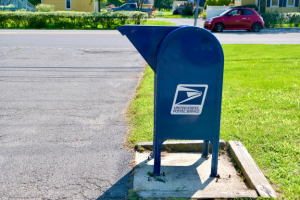Transition from FEHB to PSHB: How USPS Employees and Retirees Switch to Postal Service Health Benefits
With the introduction of the Postal Service Health Benefits (PSHB) program under the Postal Service Reform Act of 2022, USPS employees and retirees will transition from the Federal Employees Health Benefits (FEHB) program to the new PSHB system. This transition represents a significant shift for postal workers, offering them health insurance plans specifically tailored to their needs, while still providing similar benefits to those offered under FEHB. Understanding the transition process and how to make the switch smoothly is essential for USPS employees and retirees.
This guide provides an overview of the transition from FEHB to PSHB, the steps to take during open season, and what postal employees and retirees need to know about switching healthcare plans.
What is the Transition from FEHB to PSHB?
The FEHB to PSHB transition refers to the process in which USPS employees and retirees move from the Federal Employees Health Benefits (FEHB) program to the Postal Service Health Benefits (PSHB) program. Starting in 2025, postal employees will no longer participate in FEHB and will instead be covered under PSHB, a separate healthcare program designed specifically for the USPS workforce.
Key Features of the Transition:
- Separate Programs: The transition separates USPS employees from the broader federal workforce, giving them a dedicated health benefits system under PSHB.
- Coverage Continuity: Postal workers will still have access to comprehensive health insurance coverage similar to FEHB, but under plans specifically designed for USPS employees.
- Open Season: During open season, USPS employees and retirees must choose a PSHB plan to replace their current FEHB coverage.
Understanding the FEHB to PSHB transition ensures that USPS employees and retirees can maintain their health benefits with minimal disruption.
Why USPS Employees are Transitioning from FEHB to PSHB
The creation of the PSHB program was part of the Postal Service Reform Act, which aimed to address the unique healthcare needs of postal workers. The transition is designed to streamline healthcare benefits for postal employees and retirees while offering plans tailored to their specific healthcare needs.
Key Reasons for the Transition:
- Postal-Specific Plans: PSHB provides healthcare plans that are specifically designed for the postal workforce, ensuring coverage that reflects the unique needs of USPS employees.
- Cost Efficiency: The creation of a separate program helps to reduce costs for the Postal Service while maintaining high-quality healthcare options for employees and retirees.
- Simplified Administration: By separating USPS workers from the FEHB program, the administration of healthcare benefits becomes more streamlined, making it easier for postal workers to manage their benefits.
The postal employee transition to PSHB provides a more tailored healthcare system for USPS employees, aligning with their specific healthcare and retirement needs.
How to Transition from FEHB to PSHB
USPS employees and retirees will have the opportunity to transition from FEHB to PSHB during a special open season designated for this purpose. The transition process is straightforward, but it’s important to understand the steps to ensure that your healthcare coverage continues without interruption.
Steps to Transition from FEHB to PSHB:
- Review Your Current Coverage: Before making the switch, review your current FEHB plan and compare it to the available PSHB options.
- Use the PSHB Comparison Tools: Utilize the PSHB plan comparison tools available during open season to evaluate different PSHB plans based on your healthcare needs and budget.
- Enroll in a PSHB Plan: During PSHB open season, USPS employees and retirees must choose a new plan under PSHB to replace their existing FEHB coverage.
- Coordinate with Medicare (if applicable): For retirees eligible for Medicare, ensure that your PSHB plan coordinates with your Medicare benefits to provide comprehensive coverage.
Understanding how to transition from FEHB to PSHB ensures that you maintain continuous healthcare coverage during the changeover period.
PSHB vs. FEHB: What’s the Difference?
The PSHB program offers similar benefits to FEHB, but there are key differences that USPS employees should consider during the transition. While both programs provide comprehensive healthcare coverage, PSHB is designed exclusively for postal workers, offering plans that reflect the unique needs of USPS employees and retirees.
Key Differences Between PSHB and FEHB:
- Postal-Specific Plans: PSHB plans are tailored specifically for USPS employees and retirees, while FEHB covers a broader range of federal employees.
- Coverage Options: Both programs offer a range of plan types, including PPOs, HMOs, and HDHPs, but the specific plan offerings may differ under PSHB.
- Premiums: While premium structures for PSHB will be similar to FEHB, postal employees may see some adjustments in the way premiums are calculated under PSHB.
- Medicare Coordination: Like FEHB, PSHB plans will coordinate with Medicare for retirees, but the coordination rules may vary slightly between the two programs.
Understanding the differences between PSHB and FEHB helps USPS employees and retirees make informed decisions about their healthcare coverage.
Eligibility for the Transition from FEHB to PSHB
Most USPS employees and retirees will be required to transition to PSHB during the open season leading up to 2025. It’s important to understand whether you are eligible to participate in PSHB and how your current coverage will be affected by the transition.
Eligibility for Transitioning to PSHB:
- Current USPS Employees: All current USPS employees who are enrolled in FEHB must switch to a PSHB plan during the transition period.
- USPS Retirees: USPS retirees who are currently enrolled in FEHB must also transition to PSHB to maintain their health benefits.
- New USPS Employees: Employees hired after the implementation of PSHB will automatically be enrolled in the Postal Service Health Benefits program.
Meeting the eligibility requirements for PSHB is essential for ensuring continuous health coverage during the transition from FEHB.
FEHB to PSHB Open Season: How to Enroll
During the FEHB to PSHB open season, USPS employees and retirees will have the opportunity to review and select new health plans under the PSHB program. This special open season will be the time when postal workers can switch their healthcare coverage from FEHB to PSHB.
Key Steps for FEHB to PSHB Open Season:
- Review Available Plans: During the open season, USPS employees and retirees should carefully review the PSHB plans available to them and compare coverage options.
- Enroll in a PSHB Plan: Once you’ve selected the plan that best meets your needs, complete the enrollment process to officially switch from FEHB to PSHB.
- Check Premiums: Make sure to review the PSHB premiums associated with each plan to ensure that your healthcare coverage fits within your budget.
Understanding the FEHB to PSHB open season enrollment process ensures a smooth transition to your new healthcare plan.
USPS Retiree Transition from FEHB to PSHB
For USPS retirees, the transition from FEHB to PSHB will be similar to that of active employees, with retirees needing to select a PSHB plan during the open season to replace their current FEHB coverage. Retirees can expect their PSHB coverage to offer similar benefits to FEHB, including comprehensive medical, dental, and vision services, as well as prescription drug coverage.
Key Considerations for Retirees:
- Medicare Coordination: If you are a retiree who is already enrolled in Medicare, your PSHB plan will coordinate with your Medicare benefits to reduce out-of-pocket costs.
- Premiums for Retirees: Like FEHB, PSHB will offer affordable premiums for retirees, with the government covering a portion of the premium costs.
- No Break in Coverage: As long as you complete the enrollment process during open season, your coverage will continue seamlessly from FEHB to PSHB.
Understanding the USPS retiree transition from FEHB to PSHB ensures that you maintain comprehensive healthcare coverage without any disruption during retirement.
Navigating the Transition from FEHB to PSHB
The transition from FEHB to PSHB represents a significant change for USPS employees and retirees, but by understanding the process and reviewing available healthcare options, you can make the switch smoothly. By enrolling during PSHB open season and choosing the right plan for your needs, you can ensure that your healthcare coverage remains comprehensive and affordable throughout your career and retirement.
If you’re unsure about which PSHB plan is right for you or how the transition will affect your healthcare benefits, consider consulting with a health benefits advisor. Advisors can help you compare plans, review premiums, and guide you through the transition process.
Search for Public Sector Retirement Expert.
Receive the Best advice.
PSR Experts can help you determine if Public Sector Retirement is right for you or if you should look for alternatives.
The Best Advice creates
the best results.
Search for Public Sector Retirement Expert.
Receive the Best advice.
PSR Experts can help you determine if Public Sector Retirement is right for you or if you should look for alternatives.
The Best Advice creates
the best results.
Recent Articles


The Best FEHB Plans for 2025: Which One Fits Your Lifestyle and Budget the Best?
Key Takeaways: Understanding your healthcare needs and budget is

Special Retirement Options for FAA and LEO Employees: Are You Taking Advantage of What’s Available?
Key Takeaways: FAA and LEO employees have exclusive retirement

Federal Employee Benefits You Didn’t Know Could Give Your Wallet a Serious Boost in Retirement
Key Takeaways You might be sitting on hidden federal





